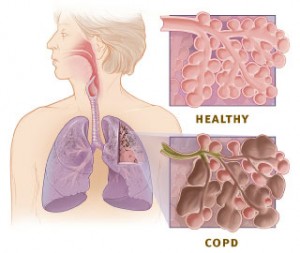A Fifth Marlboro Man Dies of Smoking Related Illness
Eric Lawson, an actor who portrayed the iconic figure of Marlboro Man, has died at the age of 72. He died from chronic obstructive pulmonary disease (COPD), a disease caused by smoking.
Lawson began smoking at the age of 14, and continued to smoke up until the time he was diagnosed as having COPD. Although in his later years he became an anti-smoking advocate, he was unable to quit himself. As his wife Susan Lawson told the Associated Press:
“He knew the cigarettes had a hold on him. He knew, yet he still couldn’t stop.”
In 1997 Lawson joined with the American Cancer Society to produce this public service announcement:
Lawson isn’t the first Marlboro Man to die of a smoking related illness. David Miller was an aspiring actor who played the Marlboro Man in the 1950’s (he apparently hated horses and had to be hoisted onto his horse with a rope). He died at the age of 81 of emphysema.
Wayne McClaren, a rodeo rider, actor and Hollywood stuntman was one of several men hired for the role in the 1970’s. He smoked 1-1/2 packs a day for about 25 years. He became a staunch anti-smoking activist, promoting anti-smoking education for children and even gave an anti-smoking speech at a Philip Morris stockholders meeting. He developed lung cancer and died at the age of 51. His mother said:
“Some of his last words were: `Take care of the children. Tobacco will kill you, and I am living proof of it.’ “
Besides his stint as Marlboro Man, actor David McLean acted in many TV westerns including Bonanza, The Westerner, High Chaparral, The Virginian and Gunsmoke. He died of lung cancer at the age of 81. After his death, his widow sued Philip Morris, “alleging that her husband died from smoking — and especially from having to smoke as many as five packs a day when commercials or print ads were being made.” The suit was later dropped.
Dick Hammer was an LAFD fireman who is probably best known for his brief stint as the Captain in the first season of the 1970’s show Emergency (he actually left the role to return to being a fireman). He modeled for print editions of the Marlboro Man (as Congress had banned TV advertisements for cigarettes by this time.) He died in 1999 of lung cancer at the age of 69.
What Is COPD?
COPD, or chronic obstructive pulmonary disease, is a progressive disease that makes it hard to breathe. “Progressive” means the disease gets worse over time. COPD is a major cause of disability, and it’s the fourth leading cause of death in the United States. More than 12 million people are currently diagnosed with COPD. An additional 12 million may have the disease and don’t even know it.
COPD can cause coughing that produces large amounts of mucus, wheezing, shortness of breath, chest tightness, and other symptoms.
Cigarette smoking is the leading cause of COPD. Most people who have COPD smoke or used to smoke. Long-term exposure to other lung irritants, such as air pollution, chemical fumes, or dust, also may contribute to COPD.
Overview of how the lungs work
 To understand COPD, it helps to understand how the lungs work. The air that you breathe goes down your windpipe into tubes in your lungs called bronchial tubes, or airways.
To understand COPD, it helps to understand how the lungs work. The air that you breathe goes down your windpipe into tubes in your lungs called bronchial tubes, or airways.
The airways are shaped like an upside-down tree with many branches. At the end of the branches are tiny air sacs called alveoli.
The airways and air sacs are elastic. When you breathe in, each air sac fills up with air like a small balloon. When you breathe out, the air sac deflates and the air goes out.
What happens in COPD?
In COPD, less air flows in and out of the airways because of one or more of the following:
- The airways and air sacs lose their elastic quality.
- The walls between many of the air sacs are destroyed.
- The walls of the airways become thick and inflamed (swollen).
In the United States, the term “COPD” includes two main conditions—emphysema and chronic obstructive bronchitis.
In emphysema, the walls between many of the air sacs are damaged, causing them to lose their shape and become floppy. This damage also can destroy the walls of the air sacs, leading to fewer and larger air sacs instead of many tiny ones.
In chronic obstructive bronchitis, the lining of the airways is constantly irritated and inflamed. This causes the lining to thicken. Lots of thick mucus forms in the airways, making it hard to breathe. Most people who have COPD have both emphysema and chronic obstructive bronchitis. Thus, the general term “COPD” is more accurate.
What Causes COPD?
Most cases of COPD develop after long-term exposure to lung irritants that damage the lungs and the airways.
In the United States, the most common irritant that causes COPD is cigarette smoke. Pipe, cigar, and other types of tobacco smoke also can cause COPD, especially if the smoke is inhaled. Secondhand smoke—that is, smoke in the air from other people smoking—also can irritate the lungs and contribute to COPD.
For more information, click here to go to the Resounding Health Casebook on COPD.
Want to quit smoking?
Look at our article about cigarette smoke and ways to quit, then visit the Resounding Health Casebook on the topic.
Here is a short video from the Entertainment Industries Council of US Surgeon General Dr. Boris Lushniak discussing tobacco use and cessation with high school and college students.



























1 Comment